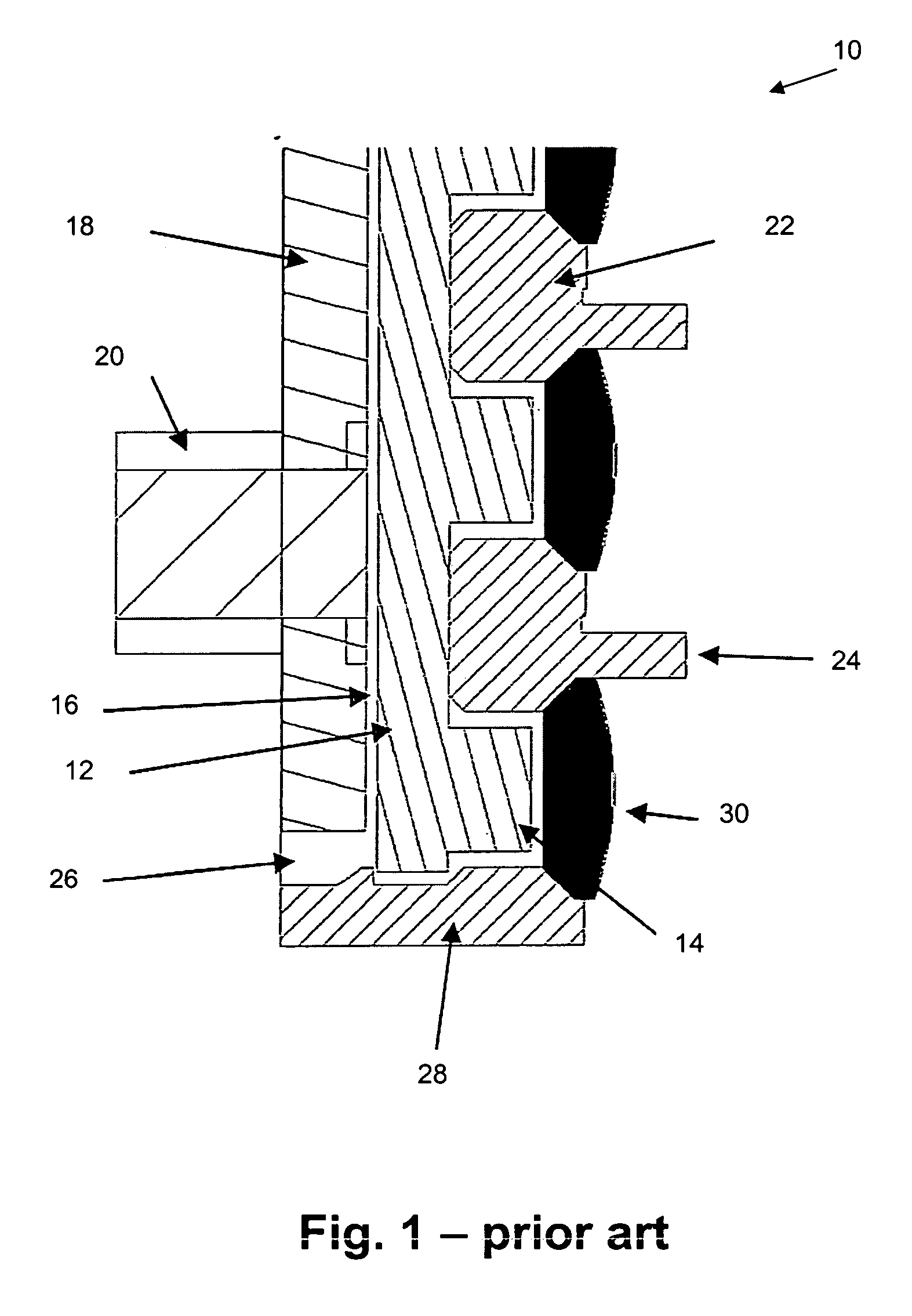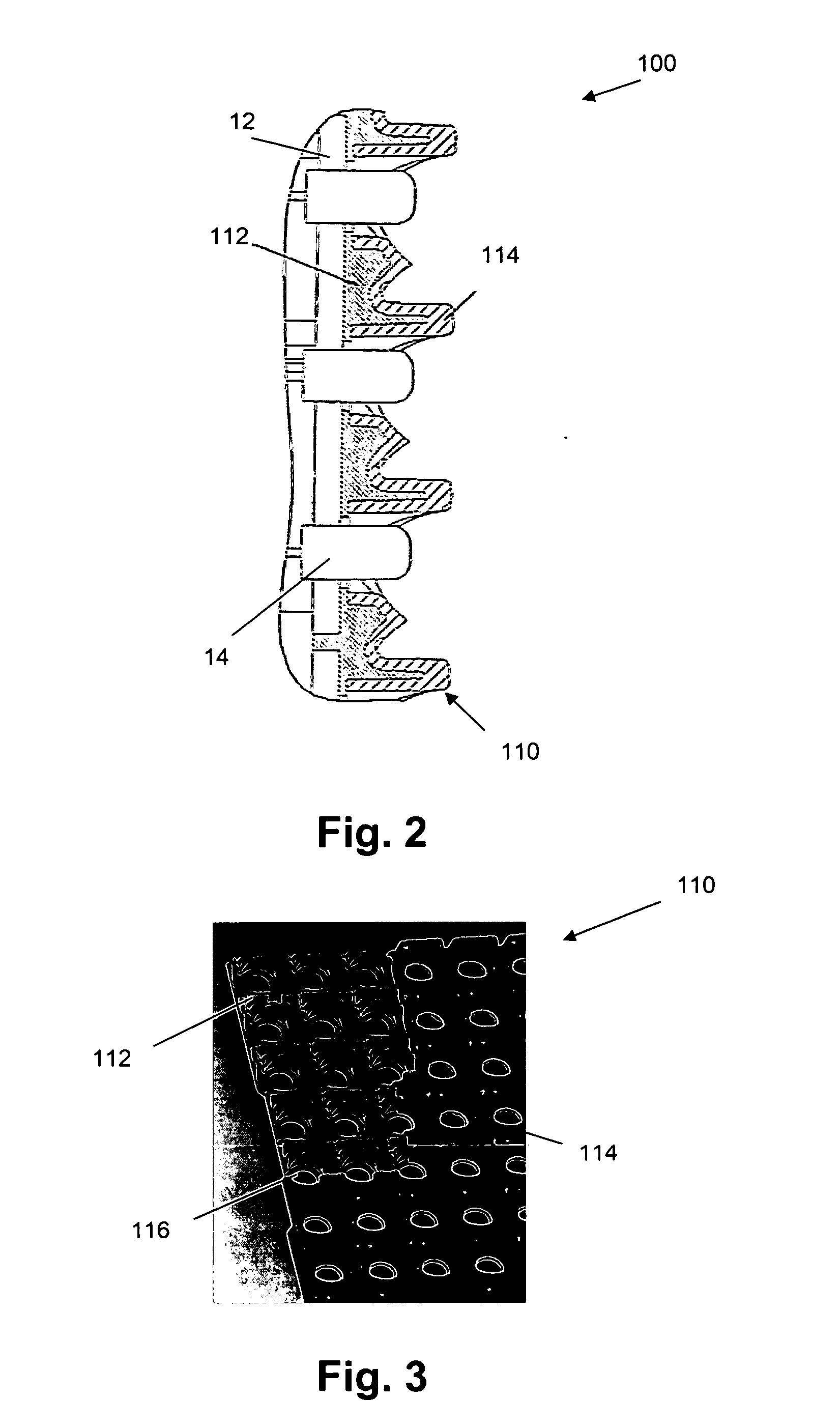Method and device for shading in a display system
a display system and display system technology, applied in the direction of identification means, lighting and heating apparatus, instruments, etc., can solve the problems of affecting the shading effect of the display system, the electronics of the display system are sealed against ambient, and the choice of shader materials is limited, so as to improve contrast, specific texture, and stay efficient over a long time
- Summary
- Abstract
- Description
- Claims
- Application Information
AI Technical Summary
Benefits of technology
Problems solved by technology
Method used
Image
Examples
first embodiment
[0071] In a first embodiment, the present invention relates to a shading device, e.g. a shading device for use in a display system. The shading device typically comprises a first component that is a core component and a second component that is at least partly covering the core component. The second component typically is a solid continuous layer covering at least a part of the core component. With a solid layer is meant a layer which is self-supporting. With a continuous layer is meant a layer which does not comprise discrete separate portions. The solid continuous layer of the display device is preferred over a fibre based second component (which can attract dust) or a sprayed film (which may flake off). In accordance with embodiments of the present invention, the second component has a lower reflectivity than the first component. Furthermore the second component may be more elastic or more flexible than the core component and / or has a lower hardness than the core component. In ot...
third embodiment
[0087] In a third embodiment, the present invention relates to a shading device according to any of the previous embodiments, whereby the shading device furthermore is adapted for accommodating optical elements in front of the plurality of light source units. The latter may e.g. be an adaptation of the shape of the shading device such that optical elements can be positioned thereon, or may be a kind of clipping, clicking or clamping means for holding optical elements in front of a plurality of light source units. Such optical elements may e.g. be a diffracting element such as a lens or a diffraction grating, or maybe a filter such as a colour filter or a deflection device for directing the light in a direction or range of directions. Such optical elements are typically used for altering the properties of light that propagate through the elements to create desired enhancement effects or to create e.g. optimised full-motion video, magnified images, three-dimensional images, etc. A sha...
PUM
 Login to View More
Login to View More Abstract
Description
Claims
Application Information
 Login to View More
Login to View More - R&D
- Intellectual Property
- Life Sciences
- Materials
- Tech Scout
- Unparalleled Data Quality
- Higher Quality Content
- 60% Fewer Hallucinations
Browse by: Latest US Patents, China's latest patents, Technical Efficacy Thesaurus, Application Domain, Technology Topic, Popular Technical Reports.
© 2025 PatSnap. All rights reserved.Legal|Privacy policy|Modern Slavery Act Transparency Statement|Sitemap|About US| Contact US: help@patsnap.com



